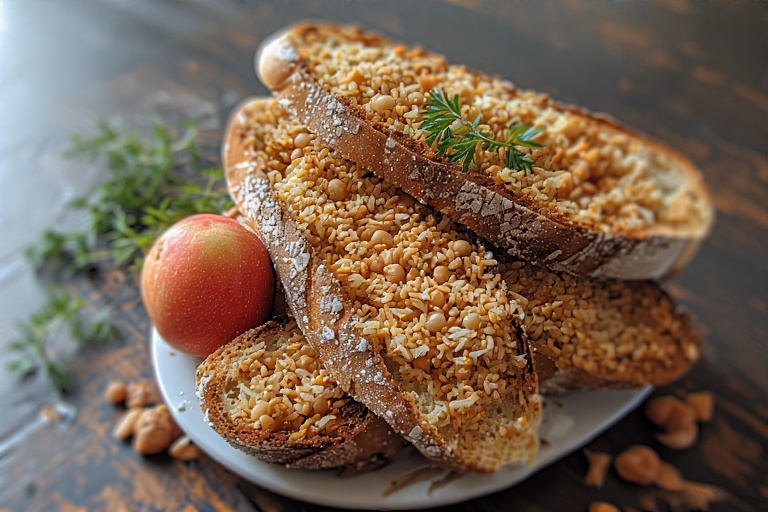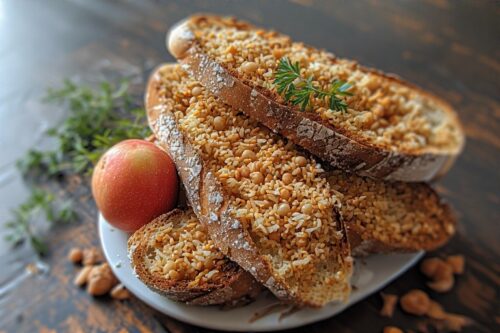

So let me tell you something real: I used to think the glycemic index was just some science-y nonsense cooked up to make people feel bad about bread. Like, how dare you enjoy a baguette without consulting a chart first? 🙄
But fast-forward to my late 20s, when my energy was tanking, my moods were all over the place, and I was either bloated or starving 24/7 — I realized something had to change. I wasn’t “eating bad,” but I was definitely missing something. Cue the glycemic index, casually suggested by a trainer friend after I whined for 30 minutes about craving muffins at 3 p.m.
“Just Google the glycemic index and see if you’re eating high-GI foods all day,” he said.
Uh. What the hell is that supposed to mean?
Anyway, I did. And I swear, that one rabbit hole turned into one of the weirdest but most helpful things I’ve tried for my health.
Wait… What Even Is the Glycemic Index?
In real person speak? It’s a ranking system that tells you how fast a food will spike your blood sugar. Like, will that rice bowl give you lasting energy… or make you want to nap under your desk an hour later?
The glycemic index (aka GI) goes from 0 to 100:
-
Low GI (55 or less): Slow and steady. Think lentils, apples, chickpeas.
-
Medium GI (56-69): Meh. Depends on the combo.
-
High GI (70+): Hello, sugar crash. White bread, cereal, straight-up glucose.
It doesn’t mean high GI = bad and low GI = good. But it does help you figure out how your body’s reacting to food — especially if you’re constantly feeling foggy, hungry, or like a snack gremlin.
Why I Started Paying Attention to It (Kinda by Accident)
Honestly? I didn’t jump on the GI train because I wanted to be “better” at eating. I was just tired. ALL. THE. TIME.
I’d wake up okay-ish, have cereal or toast for breakfast, and by 11 a.m. I was dragging like I pulled an all-nighter (I didn’t). After lunch? The crash got worse. My brain would fog over, I couldn’t focus, and I’d start craving sugar like a toddler in a candy aisle.
I thought it was burnout. Or hormones. Or not enough coffee.
Then I changed just one meal — I swapped my usual morning cereal for eggs and sweet potatoes (both low GI), and BOOM. No crash. No 10:30 donut run. Just… normal human functioning.
That was my lightbulb moment:
“Okay. Maybe this glycemic index thing isn’t total BS.”
How I Actually Use It (Without Going Full Spreadsheet Nerd)
I’m not out here scanning labels with a GI calculator or anything. I don’t own a glucose monitor. I still eat cake sometimes. But here’s what I do:
🥣 1. I Switched Out Breakfast First
This was the easiest one. Instead of cereal, I go for:
-
Oats (not the instant kind)
-
Eggs with whole grain toast
-
Greek yogurt with chia seeds and berries
I swear, just changing my first meal made a huge difference.
🥗 2. I Pair High GI Foods with Low GI Buddies
I didn’t ditch white rice completely — I just started eating it with a ton of veggies, healthy fats, and some lean protein. The fat and fiber slow down the sugar spike.
Like:
-
White rice + black beans + avocado + chicken
-
Pasta + spinach + olive oil + salmon
It’s like damage control. Tasty damage control.
🍠 3. I Started Loving Slow Carbs
Sweet potatoes, quinoa, lentils, beans — I didn’t grow up eating these much, but now I’m obsessed. They give me energy without the crash. Also? Lentil pasta slaps.
🕒 4. I Time My High GI Treats
If I am going for something sugary or high GI (hello, banana bread), I usually have it:
-
After a workout (my body actually uses the glucose)
-
With some protein/fat (like almond butter)
-
Or at least not alone on an empty stomach (a rookie mistake I made way too often)
Things I Totally Screwed Up At First
❌ I Thought Low GI = Low Cal
Nope. You can still overeat low-GI foods. Like, I once polished off a whole bag of roasted chickpeas thinking, “it’s low GI, I’m fine.”
Spoiler: I was not fine.
❌ I Got Obsessed
For about 2 weeks, I turned into a walking GI encyclopedia. I was Googling the glycemic index of carrots (yes, I’m ashamed), and stressing about whether to eat sushi rice.
Don’t do that. You’ll lose your mind.
❌ I Ignored My Body
This was the dumbest part. I got so into the numbers that I forgot to just listen to my body. Like, maybe my body does okay with bananas even if they’re “high GI.” Everyone’s blood sugar response is different, and I learned that the hard way after skipping fruit for a month and feeling like garbage.
FAQs My Friends Now Ask Me (Because I Won’t Shut Up About It)
“Do I need to count GI for every meal?”
Nah. Just notice how certain foods make you feel. If you’re crashing mid-morning or craving sugar all afternoon, look at your last meal and check the GI.
“Is GI better than calories or macros?”
It’s not a replacement. Just another layer of info. Think of GI as the vibe of a food, not its full résumé.
“Are fruits bad then?”
Not even close. Most fruits are medium to low GI. And even the ones that aren’t (looking at you, watermelon) are packed with fiber and nutrients. Eat the fruit. Your body knows what to do with it.
The Weirdest Things That Helped Me Use the GI Without Obsessing
-
Meal prepping 3-ingredient lunches: like brown rice, roasted chickpeas, and avocado. Boom. Balanced.
-
Always adding a fat: even just a drizzle of olive oil helped slow digestion.
-
Making peace with carbs: seriously. I don’t fear bread. I just don’t eat it alone anymore.
-
Learning to FEEL the sugar spike: sounds woo-woo, but once you tune in, you can tell when your blood sugar’s gone off the rails.
Final Thoughts? GI Isn’t a Diet — It’s a Compass
Listen, the glycemic index isn’t gospel. It’s not perfect. Some of the numbers are weird (like, who eats 50g of pure watermelon in one sitting?). And it won’t fix everything.
But you know what? It helped me understand my cravings.
It helped me stop crashing at 2 p.m.
And it reminded me that food is about how you feel — not just macros or calories or “clean eating.”
Bottom line?
“How to use a glycemic index” isn’t about rules — it’s about patterns.
Once you learn the rhythm, it kinda becomes second nature.
Some days I still eat cake for breakfast.
But most days, I choose foods that keep me steady. Clear-headed. Balanced.
Not because I “have to.”
Because it actually feels… better.
And hey — isn’t that what we’re all trying to do?
If you’re curious, just start with one swap. One meal.
You don’t need a chart — just pay attention. Your body’s smarter than you think.



